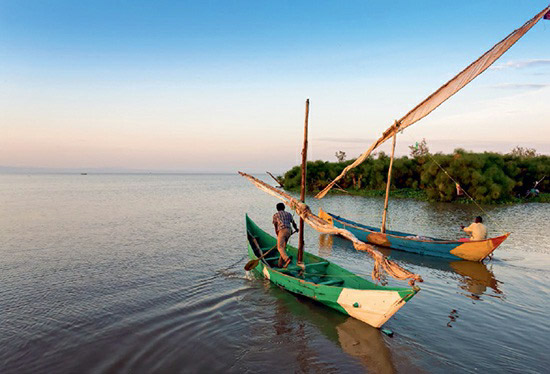Lake Victoria stands as a geological marvel within the East African rift zone, a region marked by the separation of continental plates. This rifting process has created linear zones of faulting, resulting in the formation of basins or valleys known as graben. Lake Victoria, nestled in one of these graben regions, is not only the largest tropical lake but also the second-largest freshwater lake globally, surpassed only by North America’s Lake Superior.
Encompassing an area bound by Kenya, Tanzania, and Uganda, Lake Victoria’s existence is attributed to the rifting that began about 400,000 years ago. This geological activity caused the uplift of crustal blocks, creating natural dams across rivers and subsequently forming the lake in the down-dropped graben valley. The mighty Nile River is the sole outlet of this vast lake.
Geological and fossil records indicate that Lake Victoria has experienced several periods of complete desiccation, particularly during peak Ice Age conditions, due to reduced snowmelt and precipitation. However, post-Ice Age warming trends have led to the lake’s replenishment, most notably after the last ice age around 11,000 years ago. Since then, Lake Victoria has rapidly become a biodiversity hotspot, supporting a wide array of species, including fish, reptiles, mammals, and plants adapted to its tropical environment.
Despite its ecological significance, Lake Victoria faces numerous environmental challenges. Overfishing and poor environmental management, including pollution and development, have resulted in the extinction of numerous native species and the invasion of non-native ones. These issues highlight the need for sustainable stewardship to preserve the lake’s unique ecosystem and biodiversity.

